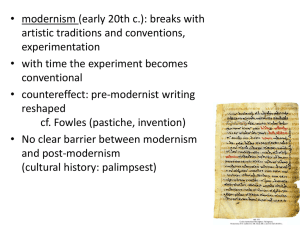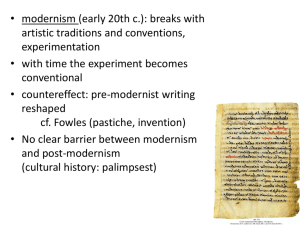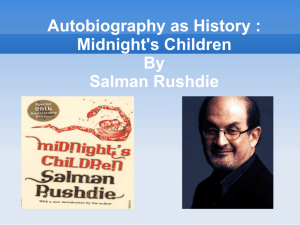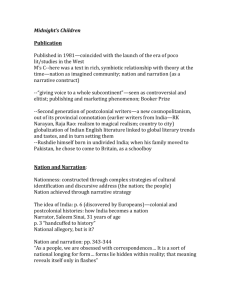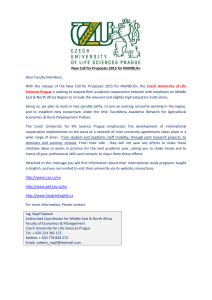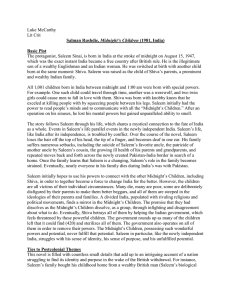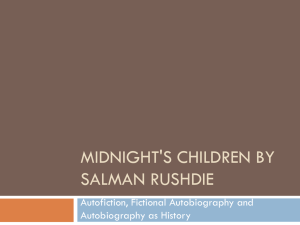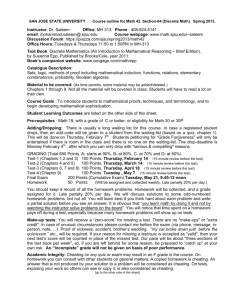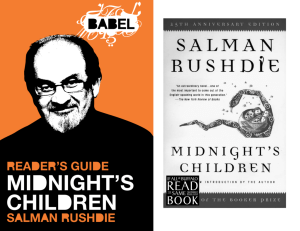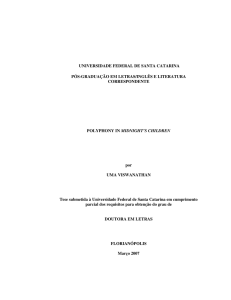Midnight's Children author &Characters
advertisement
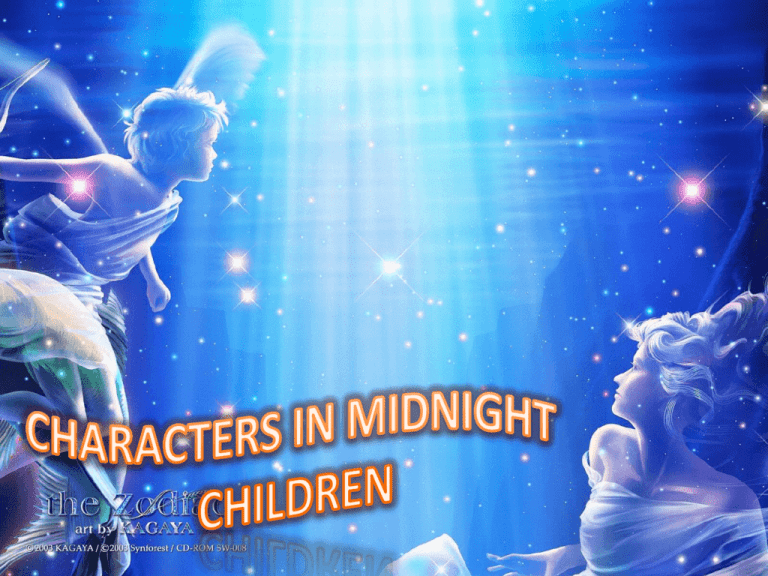
Rushdie was born on 19 June 1947, Bombay, India, into a Muslim family of Kashmiri descent. Educated at Cathedral and John Connon School in Mumbai, Rugby School, and King's College, University of Cambridge, where he studied history. Rushdie has been married four times. Awarded with -Arts Council Writers‘ Award. -Author of the Year (Germany). -Booker of Bookers for his best novel “Midnight’s Children”. -Commandeur de l'Ordre des Arts et des Lettres (France). -Booker Prize for Fiction. & many more. Midnight's Children is a 1981 book by Salman Rushdie that deals with India's transition from British colonialism to independence and the partition of British India. It is considered an example of post colonial literature and magical realism. The story is told by its chief protagonist, Saleem Sinai, and is set in the context of actual historical events as with historical fiction. Midnight's Children won both the Booker Prize and the James Tait Black Memorial Prize in 1981. Tell me what is the similarities between Saleem and Salman ? Kashmiri ancestors Born in Bombay in 1947 Muslim family Second mother, Mary Father's name, Sister's character, Ahmed Went to live in Pakistan Nicknamed Brass Monkey Saleem and Salman are derived from Arabic word "salima" meaning "to be safe" Tell me what is the difference between Saleem and Salman ? Rushdie was sent to England at the age of 14 and has lived in England ever since Saleem Sinai lived all his life in the subcontinent. a narrative where “the writer is at the centre of the text (like in an autobiography), but they transfigure their existence and identity into an unreal story, regardless of the constraints of verisimilitude” First person narration by Saleem Narrating his story to Padma, a mirror of the reader within the book. This novel incorporates fact with fiction and gives a very compact and meaningful representation to it. Naseem Ghani Adam Aziz Hanif Mustapha Mumtaz (Amina) Nadir Khan The brass Monkey Alia Emerald Ahmed Sinai Saleem Sinai Padma Shiva the protagonist and narrator of Midnight’s Children blessed with the powers of telepathy and an uncanny sense of smell His identity is switched at birth Born at the moment of India’s independence All the major events in his life correspond to important political events in Indian history She is the audience for Saleem’s narrative Shiva is Saleem’s “midnight twin” Switched at birth with Saleem He was born with a pair of enormous, powerful knees and a gift for combat. Shiva represents the alternate side of India: poor, Hindu, and as aggressive as Saleem is passive. . Because of his timely birth, Saleem believes that his life is infinitely tied to his nation, so as India goes through the struggles of stabilizing as a sovereign state, he undergoes his own ordeals. Saleem creates the Midnight’s Children Conference and uses its members to observe the social and political changes that reinvent the country, offering insight on the religious differences that led to the separation of India and Pakistan. Saleem’s tale is divided into three parts: the first describes his family history, the second talks about him being brought up as India is transforming, and the third recounts Saleem’s various endeavors in adulthood that eventually led to his death. Throughout the novel, Rushdie uses Saleem Sinai to chronicle India’s pre- and post-colonial history by having him narrate his tale through flashbacks, experience memory loss for major national events, and encounter personal struggles and tragedies at the exact moment India does. Throughout the entire narration, Saleem tells his tale to Padma, his caretaker, avid listener, and biggest critic. In doing this, Saleem is able to record his life, while flashing back to crucial moments in India’s past that shape his family’s history. By flashing in and out of the past, Saleem is able to offer his own opinion on the various events that parallel his life and India’s colonization. Saleem begins off his tale in Kashmir, the place where his grandparents met in 1915. At this point in India, the British Raj is still very much in rule, but Kashmir remains untouched because the partition has not yet wreaked havoc on the city. Saleem’s grandparents see each other for the first time on the day World War I ends. Saleem continues to chronicle his grandparents’ marriage, their move to Agra, and finally, the moment when Saleem’s parents meet. By the time his parents, Ahmed and Amina Sinai, move to Bombay to settle down, India is on the verge of collapse because of religious differences. On June 8, 1947, Amina finds out that she is pregnant, and the partition of India is announced. Moreover, a fortuneteller prophesizes Saleem’s timely birth, claiming to Amina, "A son, Sahiba, who will never be older than his motherland - neither older nor younger. There will be two heads - but you shall see only one there will be knees and a nose, a nose and knees. Newspaper praises him, two mothers raise him! Bicyclists love him - but, crowds will shove him! Sisters will weep; cobra will creep. Washing will hide him voices will guide him! Friends mutilate him - blood will betray him! Spittoons will brain him -doctors will drain him - jungle will claim him wizards reclaim him! Soldiers will try him - tyrants will fry him ... He will have sons without having sons! He will be old before he is old! And he will die ... before he is dead." Soon after Saleem’s birth, the government freezes Ahmed Sinai’s assets, causing the family to struggle to make ends meet. During this terrible period, the Sinais receive the horrendous news of Mahatma Gandhi’s assassination. The tragedy causes the Sinais to fear for their lives because they are terrified that a Muslim has killed Gandhi. Amina’s brother warns the Sinais to hide, stating, “Get out of here, big sister—if a Muslim did this thing, there will be hell to pay” (163). The killer turns out to be a Hindu extremist, and the Sinais are saved. The occurrence reveals that relations between Muslims and Hindus, even after the Partition, are still strained, and neither side trusts the other Another event that limits India’s development is the 1956 language march in which protesters call for a division of Bombay, separating inhabitants by language. As Saleem becomes an adult, his life is thrown into turmoil, causing him to lose everything he ever cared about. His family moves to Pakistan, the young nation that is the complete opposite of India. While Saleem struggles to adjust to the Muslim-dominated country, India faces its own fight with China over border disputes. Simultaneously, relations between Pakistan and India start to completely crumble, and in 1965, the two fight a war over Kashmir. Another way that Saleem depicts India’s colonization is by suffering memory loss for key events that take place in India as well as in his own life.
